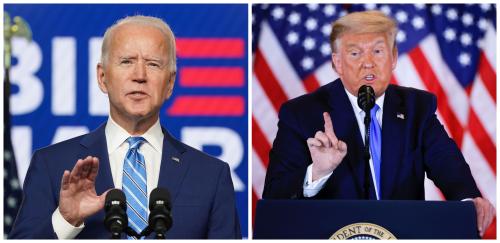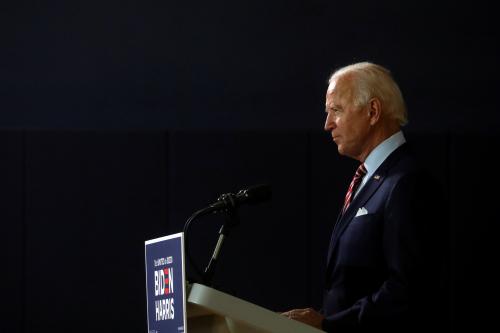This article originally appeared in Barron’s on November 6, 2020.
As president, Biden will need a bold and bipartisan economic agenda. Bold because we are still in a deep hole. Bipartisan because, at this writing, it seems likely that the branches of government will remain divided.
We will have continuing stimulus and relief negotiations during the lame-duck session. But come January, there will be a burst of new legislative proposals. As president, Joe Biden will have to pick his priorities. Ideas that promise to create jobs, help struggling families, and deal with COVID-19 would still get special attention. But a longer-term agenda will also begin to emerge, packaged in the need to build the country back better.
Bidenomics will probably focus on infrastructure and climate change (and clean-energy jobs). Biden wants to improve access to health care by lowering the age for Medicare eligibility to 60, offering a public option, lowering drug costs, and sweetening the Affordable Care Act’s subsidies (assuming the Supreme Court doesn’t eliminate it). He supports social programs such as child care, paid leave, student-debt forgiveness, free college for those with incomes under $125,000, and a stronger safety net. All of this would be expensive. He will probably try to pay for it by raising taxes on corporations and on families with more than $400,000 in income.
But if, as expected, he faces a divided Congress, some tamping down of this agenda will be needed. Here are a few ideas on how he might navigate those waters.
First, he should emphasize that we need to rebuild our sense of a common American identity by expanding national service. Every young person would be expected to provide a year of military or civilian service. In return, the government would pay for two years of public college. Richard Reeves and I call this “scholarships for service.” With the rights of citizenship come responsibilities.
Second, propose to reduce income taxes on much of the middle class by raising the standard deduction. Middle-class incomes have grown more slowly than the incomes of either the rich or the poor (after taxes and benefits). Many middle-class workers in battleground Midwestern states have been disappointed by the continuing stagnation of their wages and incomes. Republicans can support lowering taxes, and Democrats, more help for the middle class.
Lost revenue can be replaced, in part, by taxing carbon or by introducing a value-added tax. Virtually all economists believe that a carbon tax is the best way to deal with our environmental challenges, and many business leaders may accept a carbon tax as less intrusive and more efficient than new regulations. With a Democrat in the White House, it will be one or the other. Presidents don’t need Congress to regulate carbon emissions. A VAT would be a harder sell, but in 2016 Republican candidates showed interest. A VAT would, over time, raise enough revenue to deal with their fiscal concerns.
Third, rebuild and repair infrastructure. That has had bipartisan support and can be used to funnel funding to suffering state and local governments. Giving them a bigger say in how the funds are used could rebalance power between Washington and the states in a way that conservatives have always found appealing.
Fourth, reform business taxes. Lowering the corporate tax rate from 35% to 21% in 2017 was a step too far. We can raise it back to the mid-20s and remain internationally competitive. We should expense all new investments but also provide incentives for businesses to train their workers and share their profits more broadly.
Finally, educate the public on the fact that the U.S. spends far more per capita on health care than any other wealthy nation and gets much poorer results. Over time, the only way to fix the nation’s health is to address the economic and social determinants and lifestyle choices that are causing our health to deteriorate and our longevity to decline, even as we spend nearly a fifth of our gross domestic product on health care. Getting health-care costs under control is also the only realistic way to substantially slow the long-term growth of federal spending.
It’s time for both parties to realize that the nation is more moderate than either seems to believe.
Biden is a pragmatist who can work across the aisle to provide short-term relief and stimulus to restart the economy while also championing longer-term investments in infrastructure, training, education, and clean energy. As he takes office, he will need to persuade both Republicans in the Senate and his more left-leaning friends in the House to bend toward the center. It’s time for both parties to realize that the nation is more moderate than either seems to believe. That’s the only realistic way to rebuild the economy in a still-divided country.
The Brookings Institution is committed to quality, independence, and impact.
We are supported by a diverse array of funders. In line with our values and policies, each Brookings publication represents the sole views of its author(s).







Commentary
Op-edHow Bidenomics can unite a divided nation
November 9, 2020